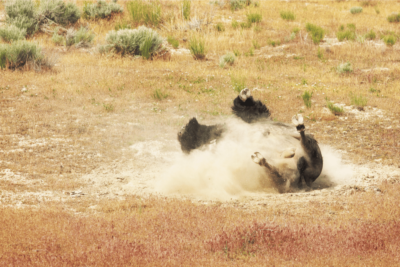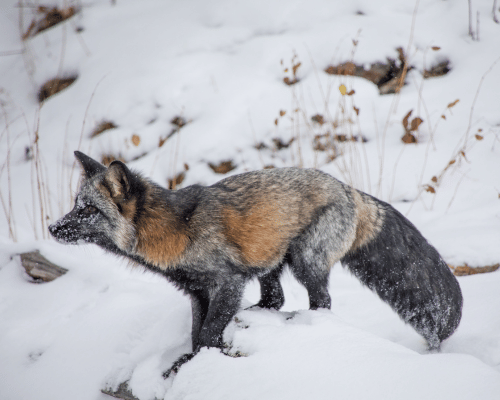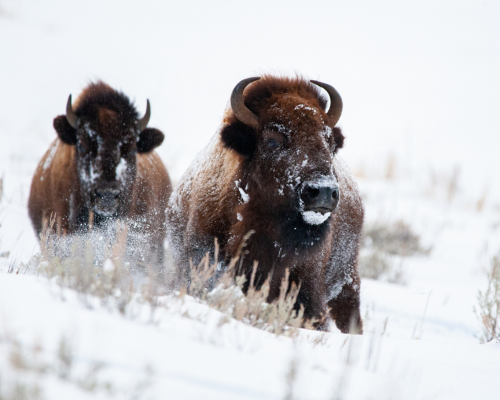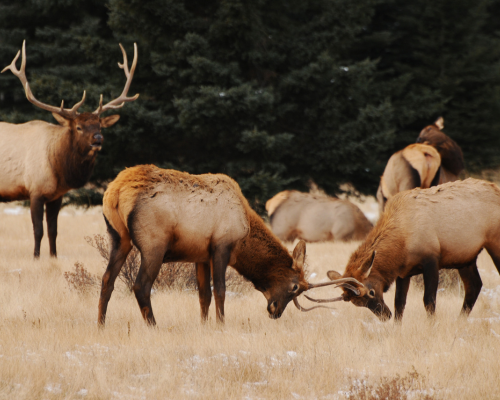Decoding the Secrets of Teton Wildlife Tours: Unraveling the Science Behind Animal Behavior

Welcome to the mesmerizing world of Teton Wildlife Tours! Nestled in the heart of the majestic Teton National Park, our tours offer a unique opportunity to delve into the captivating realm of animal behavior. As your tour guide, I am thrilled to embark on this journey of discovery with you, where we will unravel the intricate science behind the behaviors of the park’s remarkable wildlife.
Whether you are a seasoned wildlife enthusiast or a curious traveler, Teton Wildlife Tours caters to all levels of interest, providing an immersive experience that will leave you with a profound understanding of the complex behaviors exhibited by these incredible creatures.



Region’s iconic animal species
Our tours offer a front-row seat to observe these animals:
A. Setting the Stage: The Allure of Teton Wildlife Tours
Imagine standing amidst awe-inspiring mountain peaks, surrounded by vast expanses of pristine wilderness. The Tetons, with their rugged beauty and rich biodiversity, have long been a haven for wildlife enthusiasts and nature lovers. It is here that Teton Wildlife Tours takes center stage, providing an exclusive experience that combines adventure, education, and a deep appreciation for the natural world.
Our tours offer a front-row seat to observe the region’s iconic animal species, such as grizzly bears, wolves, elk, and bison, in their natural habitats. Whether you are a seasoned wildlife enthusiast or a curious traveler, Teton Wildlife Tours caters to all levels of interest, providing an immersive experience that will leave you with a profound understanding of the complex behaviors exhibited by these incredible creatures.
B. The Importance of Understanding Animal Behavior
The study of animal behavior is a gateway to unlocking the secrets of the natural world. By observing and interpreting the actions, interactions, and responses of wildlife, we gain valuable insights into their survival strategies, communication methods, and social structures. Understanding animal behavior not only deepens our connection with the natural world but also plays a crucial role in conservation efforts and sustainable tourism practices.
During our Teton Wildlife Tours, we strive to go beyond the superficial sightings of animals. We aim to provide you with a comprehensive understanding of the underlying science behind their behaviors. By uncovering the motivations, adaptations, and complexities that shape their actions, we can truly appreciate the remarkable intelligence and resilience of these creatures.
So, get ready to embark on an extraordinary adventure into the world of animal behavior in the Tetons. With each passing moment, we will delve deeper into the fascinating intricacies of their lives, unraveling the mysteries that lie beneath the surface. Together, we will witness the wonders of the natural world and gain a newfound appreciation for the delicate balance that sustains life in Teton National Park.
II. Animal Behavior Basics
As we embark on our Teton Wildlife Tours, it is essential to establish a solid foundation of knowledge about animal behavior. By understanding the fundamental principles that govern their actions, we can better appreciate the complexities that unfold before us in the wild.
A. Defining Animal Behavior
Animal behavior encompasses the range of actions and responses exhibited by animals in their natural environments. From the simplest instincts to complex social interactions, it encompasses every aspect of their lives. By studying animal behavior, scientists can gain insights into how different species adapt to their surroundings, find food, communicate, reproduce, and survive.
B. The Role of Genetics and Instincts
Genetics play a significant role in shaping animal behavior. Inherited traits and instincts are passed down from generation to generation, influencing how animals navigate their world. These instincts serve as survival mechanisms, guiding animals in their search for food, shelter, and mates.
By observing animals in their natural habitats, we can witness these innate behaviors firsthand. From the incredible precision of a bird’s nest-building skills to the instinctive migratory journeys undertaken by various species, genetics and instincts are the building blocks upon which animal behavior is constructed.
C. Environmental Factors and Adaptations
While genetics lay the foundation, environmental factors also play a crucial role in shaping animal behavior. Animals adapt to their specific habitats, adjusting their behaviors to meet the challenges posed by their surroundings. The availability of food, water, shelter, and the presence of predators all influence how animals behave and interact with their environment.
Through adaptive behaviors, animals maximize their chances of survival and reproduction. These adaptations can be seen in a variety of forms, such as camouflage, migration, hibernation, and the development of specialized feeding techniques. By understanding the intricate relationship between animals and their environment, we gain a deeper appreciation for the remarkable ways in which they have evolved to thrive in the Tetons.
By exploring the foundations of animal behavior, we lay the groundwork for a more profound understanding of the wildlife we encounter during our tours. Join me as we delve into the intricacies of sensory perception, communication, social structures, and more. Together, we will unlock the secrets of Teton wildlife and gain a greater appreciation for the wonders of the natural world.
III. The Science of Teton Wildlife Tours
As we venture deeper into the realm of Teton Wildlife Tours, it’s essential to understand the scientific principles that underpin our expeditions. Our tours are not just about witnessing wildlife; they are a unique blend of scientific knowledge and wilderness exploration.
A. Behind the Scenes of a Wildlife Tour
At Teton Wildlife Tours, we believe that a successful wildlife tour goes beyond chance encounters. It requires careful planning, research, and expertise. Before each tour, our team of experienced wildlife biologists and guides extensively study the behaviors, habitats, and movement patterns of the park’s wildlife.
We delve into scientific literature, conduct field research, and collaborate with other researchers to gather valuable insights into the animals’ lives. By staying up-to-date with the latest findings in animal behavior research, we ensure that our tours provide accurate and enriching experiences.
B. The Benefits of Scientific Knowledge in Guiding
Scientific knowledge forms the backbone of our guiding philosophy. Our guides undergo rigorous training to understand the intricacies of animal behavior and interpret the subtle cues exhibited by wildlife. By combining their expertise with the latest scientific research, they provide a comprehensive understanding of the animals we encounter.
By incorporating scientific knowledge into our tours, we go beyond mere observation. We foster a deeper connection between our guests and the wildlife, allowing them to appreciate the animals’ behaviors in a meaningful way. Understanding why an animal behaves a certain way adds depth and context to the encounters, transforming them into unforgettable experiences.
Moreover, our commitment to science extends beyond the tours themselves. Through our collaboration with researchers and involvement in citizen science initiatives, we actively contribute to ongoing studies, helping to expand our knowledge of Teton wildlife and contribute to their conservation.
Join us on a journey where scientific expertise and passion for wildlife converge. Together, we will unlock the secrets of Teton National Park, gaining a profound understanding of the intricate behaviors that shape the lives of its remarkable inhabitants.
Sensory Perception
To truly comprehend the world of Teton wildlife, it is essential to explore the fascinating realm of sensory perception. Animals rely on their senses to navigate their environment, locate food, communicate, and detect potential dangers. In this section, we will uncover the sensory mechanisms that shape their experiences.
Communication and Social Behavior
Communication lies at the heart of animal interactions, allowing them to convey information, establish social bonds, and coordinate group activities. In this section, we will delve into the captivating world of animal communication and explore the intricacies of social behavior within Teton wildlife.
Foraging and Hunting Strategies
Survival in the wild requires animals to be resourceful in finding food and securing nourishment. In this section, we will explore the diverse foraging and hunting strategies employed by Teton wildlife to thrive in their challenging environments.
IV. Reproduction and Parental Care
The perpetuation of life is a fundamental aspect of the natural world, and Teton wildlife is no exception. In this section, we will explore the captivating realm of reproduction and parental care, gaining insights into the remarkable strategies employed by animals to ensure the survival of their species.
A. Mating Rituals and Courtship Displays
Mating rituals and courtship displays are vital components of reproductive success for many species. Animals employ an array of behaviors, such as intricate dances, vibrant plumage displays, or elaborate vocalizations, to attract mates and establish breeding partnerships. By observing these courtship rituals, we gain a glimpse into the fascinating world of animal courtship and the diverse strategies employed by Teton wildlife to find suitable mates.
B. Parental Care: Nurturing the Next Generation
Once offspring are conceived, the role of parental care becomes paramount. From the protective nests of birds to the nurturing behavior of mammalian parents, the dedication shown by animals in raising their young is truly remarkable. By exploring the complexities of parental care, we gain insights into the challenges faced by parents in providing food, shelter, and protection for their offspring. We will discover how animals pass on crucial survival skills and witness the heartwarming bonds between parents and their young.
By delving into the intricacies of reproduction and parental care in Teton wildlife, we deepen our understanding of the circle of life. Join us as we witness the courtship rituals, observe the tender moments of nurturing, and gain a newfound appreciation for the remarkable journey of life that unfolds in the Tetons.
V. Migration and Navigation
The phenomenon of migration has fascinated humans for centuries. In this section, we will unravel the mysteries of animal migration and navigation, exploring the incredible journeys undertaken by Teton wildlife.
A. The Mysteries of Animal Migration
Migration is a remarkable behavior observed in many species, where animals undertake long-distance journeys to access favorable breeding grounds, forage for food, or seek more hospitable climates. From the iconic annual migrations of birds to the epic journeys of mammals and even some fish species, understanding the factors that trigger and guide these migrations is a captivating field of study. We will delve into the challenges faced by migrating animals, the navigation cues they rely on, and the remarkable feats of endurance displayed during their arduous travels.
B. Navigational Abilities: From Magnetic Fields to Celestial Cues
The ability of animals to navigate across vast distances without getting lost is awe-inspiring. Teton wildlife, like many other species, possess remarkable navigational abilities. Some rely on Earth’s magnetic fields to orient themselves, while others utilize celestial cues such as the positions of stars and the sun. By exploring these navigational mechanisms, we gain insight into the precision and accuracy with which animals undertake their migrations, and the extraordinary adaptations that enable them to reach their destination.
Join us as we unravel the mysteries of migration and navigation in Teton wildlife. We will witness the awe-inspiring journeys undertaken by these animals and gain a deeper appreciation for the instinctual navigational abilities that guide them through the vast wilderness of the Tetons.
VI. Human-Wildlife Interactions
The coexistence between humans and wildlife in the Tetons is a delicate balance. In this section, we will explore the impact of human presence on animal behavior and the strategies employed to ensure responsible wildlife tourism.
A. The Impact of Human Presence on Animal Behavior
The presence of humans can significantly influence the behavior of wildlife. Animals may alter their foraging patterns, modify their movement, or exhibit stress responses in the presence of human activities. Understanding the ways in which animals perceive and respond to human presence allows us to minimize potential disturbances and maintain the natural behaviors of Teton wildlife.
B. Strategies for Responsible Wildlife Tourism
Responsible wildlife tourism aims to minimize negative impacts on wildlife while providing meaningful and educational experiences for visitors. Through the implementation of guidelines and best practices, we can ensure that wildlife tours in the Tetons are conducted in an ethical and sustainable manner. These strategies include maintaining respectful distances, minimizing noise and disturbances, and adhering to designated trails and viewing areas. By promoting responsible wildlife tourism, we can protect the well-being of wildlife and their habitats, while still allowing visitors to appreciate the wonders of Teton wildlife.
Join us as we navigate the delicate intersection between humans and wildlife in the Tetons. By understanding the impacts of our presence and adopting responsible practices, we can foster a harmonious coexistence that safeguards the natural behaviors and habitats of the remarkable animals we encounter.
VII. Ethical Considerations
As we explore the world of Teton wildlife, it is important to address the ethical considerations surrounding wildlife tours and our responsibility as stewards of the natural environment. In this section, we will delve into the balance between conservation and tourism, ensuring the welfare of wildlife remains a top priority.
A. Balancing Conservation and Tourism
Conservation and tourism can, and should, go hand in hand. Responsible wildlife tourism can contribute to the preservation of natural habitats and raise awareness about the importance of protecting wildlife. By supporting local conservation efforts and initiatives, we can actively participate in safeguarding the ecosystems that sustain Teton wildlife. Finding the delicate balance between providing unforgettable experiences for visitors and safeguarding the long-term well-being of wildlife is key to ensuring a sustainable future.
B. Ensuring the Welfare of Wildlife
The welfare of wildlife must always be a primary concern. It is crucial to prioritize the comfort, safety, and natural behaviors of animals during wildlife tours. This includes maintaining appropriate viewing distances, refraining from actions that may cause distress or harm to wildlife, and adhering to guidelines established by conservation authorities. By promoting a culture of respect and empathy towards wildlife, we can ensure that our interactions leave a positive impact on their lives and their habitats.
Join us as we navigate the ethical considerations surrounding wildlife tours in the Tetons. By embracing responsible practices and prioritizing the welfare of wildlife, we can contribute to the long-term conservation of Teton wildlife and foster a deep appreciation for the natural wonders that surround us.
VIII. Technological Advances in Wildlife Research
The field of wildlife research has been revolutionized by technological advancements. In this section, we will explore the innovative tools and techniques that are expanding our understanding of Teton wildlife and aiding in conservation efforts.
A. Tracking and Monitoring Animal Behavior
Technological innovations have provided researchers with the ability to track and monitor the behavior of wildlife in unprecedented detail. GPS collars, radio telemetry, and satellite tracking devices enable scientists to gather valuable data on animal movements, migration patterns, and habitat usage. By studying the intricate behaviors and movement patterns of Teton wildlife, we gain insights into their ecological needs and can make informed conservation decisions.
B. Innovative Tools for Wildlife Conservation
Advancements in camera technology, drones, and remote sensing have revolutionized the way we study and monitor wildlife. Camera traps provide valuable insights into the secretive behaviors of animals, while drones offer an aerial perspective for monitoring habitats and assessing population sizes. Remote sensing techniques, such as satellite imagery and acoustic monitoring, provide a broader understanding of ecosystem health and aid in the detection of changes in wildlife populations. These innovative tools allow us to gather crucial data while minimizing disturbances to wildlife.
By embracing the power of technology in wildlife research, we gain a deeper understanding of the complexities of Teton wildlife. These advancements not only enhance our knowledge but also enable us to implement effective conservation strategies, ensuring the long-term survival of the remarkable animals that call the Tetons their home.
IX. Case Studies: Wildlife Behavior in Teton National Park
In this section, we will delve into specific case studies that highlight the fascinating behaviors exhibited by wildlife in Teton National Park. By examining the behaviors of iconic species, we gain a deeper appreciation for the intricate dynamics and adaptations that shape their lives.
A. Grizzly Bears: Insights into Their Behavior
Grizzly bears are among the most iconic and awe-inspiring animals in the Tetons. Through careful observation and research, we have gained valuable insights into their foraging strategies, mating behaviors, and interactions with other species. Exploring the fascinating world of grizzly bear behavior allows us to understand their role as keystone species and their importance in maintaining the delicate balance of the ecosystem.
B. Wolves: Unveiling the Secrets of the Pack
Wolves hold a special place in the ecological tapestry of Teton National Park. These highly social and intelligent animals exhibit complex behaviors within their packs. By studying their social structures, hunting techniques, and communication methods, we unravel the captivating world of wolf behavior. Understanding the dynamics within wolf packs provides valuable insights into their roles as apex predators and the ecological impact they have on their surroundings.
Through these case studies, we gain a deeper understanding of the behaviors and ecological significance of grizzly bears and wolves in Teton National Park. Join us as we explore the intricate lives of these iconic species, revealing the remarkable behaviors that contribute to the richness and diversity of the Tetons’ natural heritage.
X. The Role of Citizen Science
Citizen science plays a vital role in wildlife research and conservation efforts in Teton National Park. In this section, we will explore the significance of engaging the public in wildlife research and the valuable contributions made by citizen scientists.
A. Engaging the Public in Wildlife Research
Citizen science involves actively involving the general public in scientific research projects. By engaging individuals of all backgrounds and skill levels, citizen science initiatives create opportunities for people to contribute to wildlife research and conservation efforts. In Teton National Park, citizen scientists play a crucial role in data collection, monitoring wildlife populations, and documenting observations. Engaging the public in wildlife research fosters a sense of ownership and connection with the natural world, empowering individuals to make a meaningful impact.
B. Contributions of Citizen Scientists in Teton National Park
Citizen scientists provide valuable data and observations that supplement the work of professional researchers. Through initiatives such as wildlife surveys, bird counts, and data reporting, citizen scientists contribute to long-term monitoring efforts, enhancing our understanding of Teton wildlife. Their observations and data help identify trends, map distributions, and inform conservation strategies. Citizen scientists become ambassadors for wildlife conservation, raising awareness in their communities and promoting responsible practices.
By actively involving the public in wildlife research, we expand the reach and effectiveness of scientific endeavors in Teton National Park. Together, we can harness the collective power of citizen science to gain insights, protect wildlife habitats, and foster a sense of stewardship for the extraordinary biodiversity found within the Tetons.
XI. The Future of Wildlife Tours
As we look to the future, the realm of wildlife tours in the Tetons is evolving. In this section, we will explore emerging trends in animal behavior research and discuss how they are enhancing the wildlife tour experience.
A. Emerging Trends in Animal Behavior Research
Advancements in technology and scientific understanding are continuously pushing the boundaries of animal behavior research. New techniques, such as bioacoustics, genetic analysis, and sophisticated tracking methods, provide deeper insights into the behaviors of Teton wildlife. These emerging trends allow researchers and tour guides to uncover hidden aspects of animal behavior, leading to a richer and more comprehensive understanding of the natural world.
B. Enhancing the Wildlife Tour Experience
With the integration of cutting-edge research and technology, the wildlife tour experience is becoming more immersive and educational. Innovative tools, such as virtual reality and interactive exhibits, enable visitors to gain a deeper understanding of animal behavior and the ecosystems they inhabit. Guided by knowledgeable tour guides who are up-to-date with the latest research findings, visitors can embark on unforgettable journeys that highlight the intricate behaviors and adaptations of Teton wildlife.
The future of wildlife tours in the Tetons holds great promise. As scientific advancements continue to shed light on the complexities of animal behavior, we can look forward to even more engaging and enriching wildlife tour experiences. By embracing these emerging trends, we can foster a deeper appreciation for the natural wonders of the Tetons and inspire a sense of wonder and conservation in future generations.
XII. Summary: Deciphering the Complexities of Animal Behavior in Teton National Park
In this comprehensive exploration of Teton Wildlife Tours, we have delved into the captivating world of animal behavior in Teton National Park. From the basics of animal behavior to the emerging trends in research, we have unraveled the intricate web of interactions, adaptations, and strategies that shape the lives of Teton wildlife. Let us summarize the key takeaways from our journey of discovery.
- Animal Behavior Basics: We established a foundation by understanding the role of genetics, instincts, and environmental factors in shaping animal behavior.
- The Science of Teton Wildlife Tours: We explored the scientific principles that guide our wildlife tours, ensuring an informed and enriching experience.
- Sensory Perception: We uncovered how animals use vision, hearing, and smell to navigate and communicate in their environments.
- Communication and Social Behavior: We delved into the vocalizations, body language, and social structures that facilitate interactions among animals.
- Foraging and Hunting Strategies: We examined the diverse strategies employed by herbivores and carnivores to find food and survive in their habitats.
- Reproduction and Parental Care: We gained insights into the mating rituals, courtship displays, and the nurturing behaviors exhibited by wildlife.
- Migration and Navigation: We marveled at the incredible journeys undertaken by migrating animals and explored their navigational abilities.
- Human-Wildlife Interactions: We discussed the impact of human presence on animal behavior and strategies for responsible wildlife tourism.
- Ethical Considerations: We emphasized the importance of balancing conservation and tourism while ensuring the welfare of wildlife remains a priority.
- Technological Advances: We highlighted the role of technology in tracking, monitoring, and studying wildlife, aiding in conservation efforts.
- Case Studies: We explored specific behaviors of grizzly bears and wolves, offering insights into their ecological significance.
- The Role of Citizen Science: We recognized the invaluable contributions made by citizen scientists in wildlife research and conservation.
- The Future of Wildlife Tours: We looked ahead to emerging trends in animal behavior research, enhancing the wildlife tour experience.
By deciphering the complexities of animal behavior in Teton National Park, we deepen our connection to the natural world. Let us carry the knowledge gained during our exploration, fostering a sense of awe, respect, and stewardship for the remarkable wildlife that graces the Tetons. As we continue to unravel the secrets of the natural world, may we ensure the preservation of this wilderness for generations to come.
XIII. Conclusion: Embracing the Wonders of Teton Wildlife Tours
In the realm of Teton Wildlife Tours, we have embarked on a remarkable journey of discovery, unraveling the science behind animal behavior in the Tetons. From the captivating behaviors of grizzly bears and wolves to the intricate communication systems and navigation abilities of Teton wildlife, we have gained a profound understanding of the natural world that surrounds us.
Throughout our exploration, we have witnessed the delicate balance between conservation and tourism, acknowledging the responsibility we bear as stewards of this precious ecosystem. By embracing responsible wildlife tourism practices and prioritizing the welfare of wildlife, we can ensure the long-term preservation of the extraordinary biodiversity that thrives in the Tetons.
As we move forward, let us carry the knowledge and appreciation gained from our Teton Wildlife Tours, fostering a deeper connection to the natural world. Whether as citizen scientists, enthusiastic visitors, or dedicated conservationists, we each have a role to play in protecting the magnificent wildlife and habitats that define the Tetons.
So, join us on future wildlife tours, as we continue to explore, learn, and share in the wonders of Teton National Park. Together, let us celebrate the diversity of animal behavior, embrace the beauty of the natural world, and inspire a collective commitment to safeguarding this extraordinary wilderness for generations to come.




